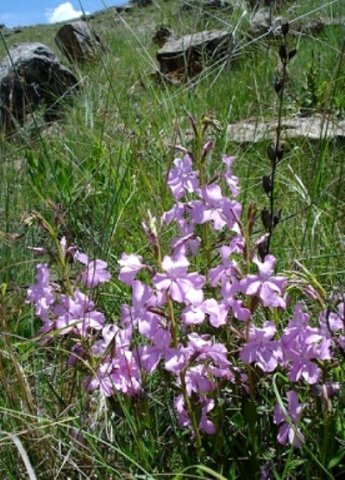Cycnium racemosum

Author: Ivan Lätti
Photographer: Judd Kirkel Welwitch
Cycnium racemosum, the large pink ink plant or large mountain ink flower won’t be missed among boulders and grass on this mountain slope. The plants are mostly pollinated by bees and butterflies on sunny days as in the photo. The vibrant colours attract the insects searching for food (Manning, 2009; Wikipedia; https://www.botanicalrealm.com).

